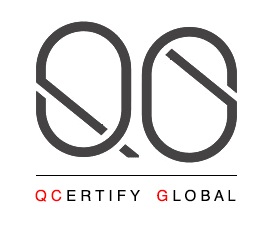Top 10 GRC Trends in 2025: What Every Business Should Know
In today’s fast-paced business environment, Governance, Risk, and Compliance (GRC) strategies are evolving rapidly. With increasing regulatory requirements, cyber threats, and emerging technologies, organizations must stay ahead to ensure robust risk management and compliance. As we step into 2025, let’s explore the top 10 GRC trends shaping the future of business governance and security.
1. AI-Driven Compliance Automation
Artificial Intelligence (AI) is revolutionizing compliance management by automating risk assessments, audits, and regulatory reporting. AI-powered tools can detect anomalies, predict compliance gaps, and streamline policy adherence, reducing manual workloads and human errors.
2. Rise of Integrated GRC Platforms
Businesses are moving away from siloed risk management approaches and adopting integrated GRC platforms. These solutions provide a centralized view of compliance, risk, and governance processes, enabling better decision-making and reducing compliance costs.
3. Cybersecurity Risk Management Becomes a Top Priority
With the surge in cyber threats, businesses are prioritizing cybersecurity risk management within their GRC frameworks. Organizations are implementing stricter controls, continuous monitoring, and Zero Trust security models to safeguard sensitive data and comply with regulations like GDPR and ISO 27001.
4. Regulatory Technology (RegTech) Adoption
RegTech solutions are gaining traction as businesses seek to navigate complex compliance requirements efficiently. These technologies leverage AI, blockchain, and data analytics to ensure real-time regulatory monitoring and automate compliance workflows.
5. ESG (Environmental, Social, and Governance) Compliance Takes Center Stage
Environmental, Social, and Governance (ESG) factors are now integral to corporate compliance. Companies are focusing on sustainable business practices, carbon footprint reduction, and ethical governance to meet investor and regulatory expectations.
6. Continuous Monitoring and Real-Time Risk Assessment
Traditional periodic risk assessments are being replaced by continuous monitoring solutions. Advanced GRC tools now provide real-time insights into compliance risks, financial threats, and operational vulnerabilities, ensuring proactive risk mitigation.
7. Cloud-Based GRC Solutions Gain Momentum
Cloud adoption continues to rise, and GRC is no exception. Cloud-based GRC solutions offer scalability, remote access, and enhanced security, allowing businesses to manage compliance seamlessly from anywhere in the world.
8. Increased Focus on Third-Party Risk Management (TPRM)
As businesses rely more on third-party vendors, managing external risks has become crucial. Organizations are enhancing their third-party risk management programs by conducting thorough vendor risk assessments and enforcing stricter compliance policies.
9. AI-Powered Fraud Detection and Prevention
AI and machine learning are being used to detect fraudulent activities within financial transactions and compliance operations. These intelligent systems analyze behavioral patterns and flag potential risks, reducing financial and reputational damage.
10. The Shift Towards Predictive Compliance
Predictive compliance is emerging as a key trend where businesses leverage AI-driven insights to anticipate regulatory changes. By proactively adapting to new regulations, organizations can stay compliant and reduce the risk of penalties.
Conclusion
The GRC landscape in 2025 is heavily influenced by technological advancements, regulatory shifts, and cybersecurity challenges. Businesses must embrace AI, automation, and integrated risk management strategies to stay compliant and resilient.
At QCertify Global, we help organizations navigate the complexities of GRC with expert consultation and tailored certification solutions. Contact us today to future-proof your business against compliance risks!




